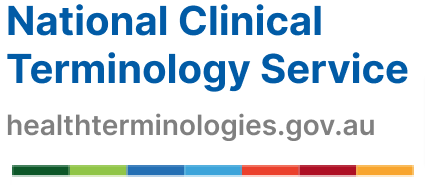Common tasks
The SNOMED CT-AU Technical Implementation Guide provides guidance for many of the common tasks you need to complete when working with native SNOMED CT RF2 files.
Importing terminology content
Before consuming terminology codes in a clinical software system, the content needs to be prepared and loaded into a database. The Australian Technical Implementation guide and supporting configuration scripts to set up a sample database schema into which the content of the Australian Terminology release bundle is loaded for demonstration purposes only.
Common tasks include:
- Downloading a release bundle
- Preparing release bundle for import
- Creating tables based on sample scripts
- Loading the release into tables
- Creating additional objects
SNOMED CT-AU Australian Technical Implementation Guide
SNOMED CT-AU Australian Terminology Sample Scripts
SNOMED CT Release File Specifications
Working with preferred terms
The Australian dialect reference set (ADRS) is a Language type reference set; it specifies the Preferred Terms and acceptable Synonyms identified as appropriate for the recording of clinical information in Australian e-health implementations. We continuously improve the ADRS with each SNOMED International release and accept request submissions from the community for additional Australian expressions and spellings.
Implementation of the ADRS is required when working with RF2 files, so that the Preferred Term for each concept may be identified. The Australian Technical Implementation Guide describes how to work with the different description types.
Common tasks include:
- Locating the ADRS
- Performing a query to extract the preferred term
- Creating a function to return the preferred term
- Storing denormalised data structures for better performance
SNOMED CT-AU Australian Technical Implementation Guide
SNOMED CT-AU Australian Terminology Sample Scripts
Creating custom reference sets
Reference sets are a SNOMED CT standard format that allows you to customise the terminology. They range from simple subsets of SNOMED CT components to complex patterns that include additional information. The NCTS publishes many reference sets to support national specifications and other digital health initiatives. These are described in the Development approach to reference sets document.
Implementers can create custom or refined reference sets to better suit their needs, and some techniques are described in the Australian Technical Implementation Guide. However consider the following:
- clinical information and user requirements for data entry and retrieval
- governance and development processes
- long-term maintenance costs
- impact on interoperability and the national specifications for data exchange that specify reference sets in defined fields e.g. SNOMED CT or AMT codes captured in the Shared Health Summary uploaded in My Health Record
The NCTS supports the publication of reference sets owned and developed by SNOMED CT-AU licensees within the Australian edition.
Common tasks include:
- Customising reference sets based on inclusion or exclusion criteria
- Ensuring conformance to release file specifications
SNOMED CT-AU Australian Technical Implementation Guide
SNOMED CT-AU Australian Terminology Sample Scripts
Practical Guide to Reference Sets
Updates and maintenance
Each SNOMED CT-AU release includes changes to the terminology content. Some of the reasons for change are to:
- correct errors and fill gaps;
- stay abreast of changing clinical knowledge; or to
- map to or align with other code systems and classifications.
Implementers must update to latest versions of SNOMED CT-AU within the time frames specified in the Australian National Terminology Licence Agreement.
Common tasks include:
- Identifying changes by assessing the active column of a component.
- Identifying inactive concepts and their suggested replacements using the Association reference set.
SNOMED CT-AU Australian Technical Implementation Guide
SNOMED CT-AU Australian Terminology Sample Scripts
